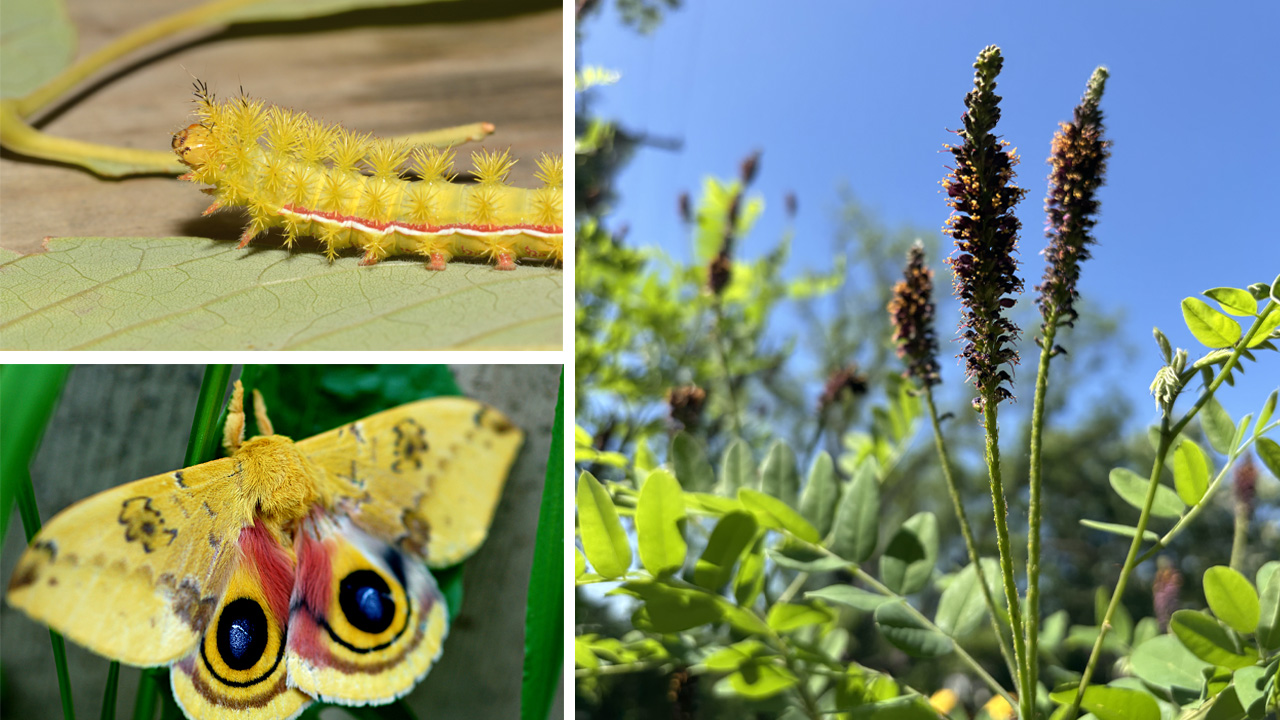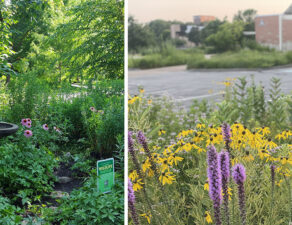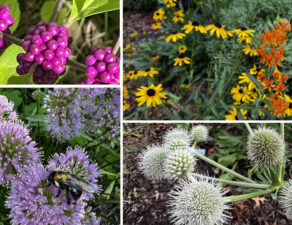
Pictured clockwise from top left: Io Moth Caterpillar (Andy Reago & Chrissy McClarren); Indigo bush; Automeris Io (Jeremy Johnson)
This month is full of brilliant flowering plants to highlight, but for this edition we’re going to recognize a short-lived powerhouse of a bloom from Indigo Bush (Amorpha fruticosa).This vigorous shrub is a showpiece specimen in any larger garden bed. It can also be used as a vibrant screening hedge, incorporated as an excellent addition to any rangeland restoration , or naturalize in a “wilder” plant community. In the family of legumes, or Fabacea, though they may share common epithets, this Amorpha is not related to the False Indigos in the Baptisia genus but rather is a close cousin of Lead Plant (Amorpha canescens) and expresses similarly intricate foliage. Despite their closeness, A. fruticosa won’t be found in rocky prairies, but prefers more moist bottomland soils and can be found colonizing stream banks, pond edges, and exposed islands of waterways across North America. In my garden it seems to be in flower for such a short time that I’ve missed it entirely some seasons, but when one is fortunate to experience the inflorescence, it’s impossible not to notice the hordes of bees with such overflowingly full pollen sacks that they appear to be wearing poofy golden pantaloons!
In addition to feeding scores of pollen and nectar seekers, this potentially massive (15-20’ tall with an equivalent spread) shrub is a larval magnet, hosting Dogface, Skipper, and Grey Hairstreak butterflies. But perhaps the most interesting insect you may find growing on your Indigo Bush is the Saturniid moth known as the Io, or Peacock Moth. As an adult, its boldly spotted beauty is a treat to behold, but as a caterpillar it is definitely a “look-don’t-touch” insect, as its spiny exterior delivers an acutely burning sting if touched, with throbbing pain lasting up to several hours. Due to its vigorous growth habit, aggressive pruning in late fall or early winter should be employed to maintain a more manicured and intentional form in the designed urban landscape, but in larger mesic or moist environments it can really take hold. Look for A. fruticosa and all the “Indigos” at our June 14th Deep Roots Native Plant Sale and be sure to place a pre-order to streamline your purchases and get you back in the garden planting!







